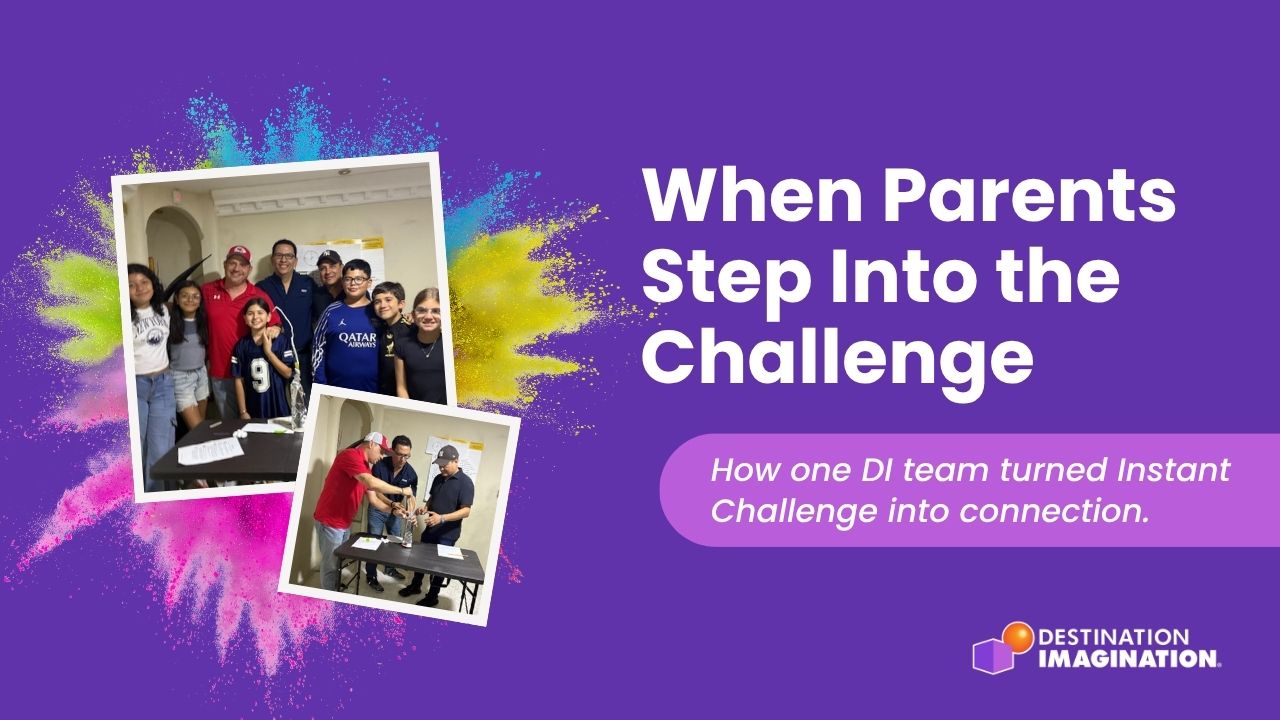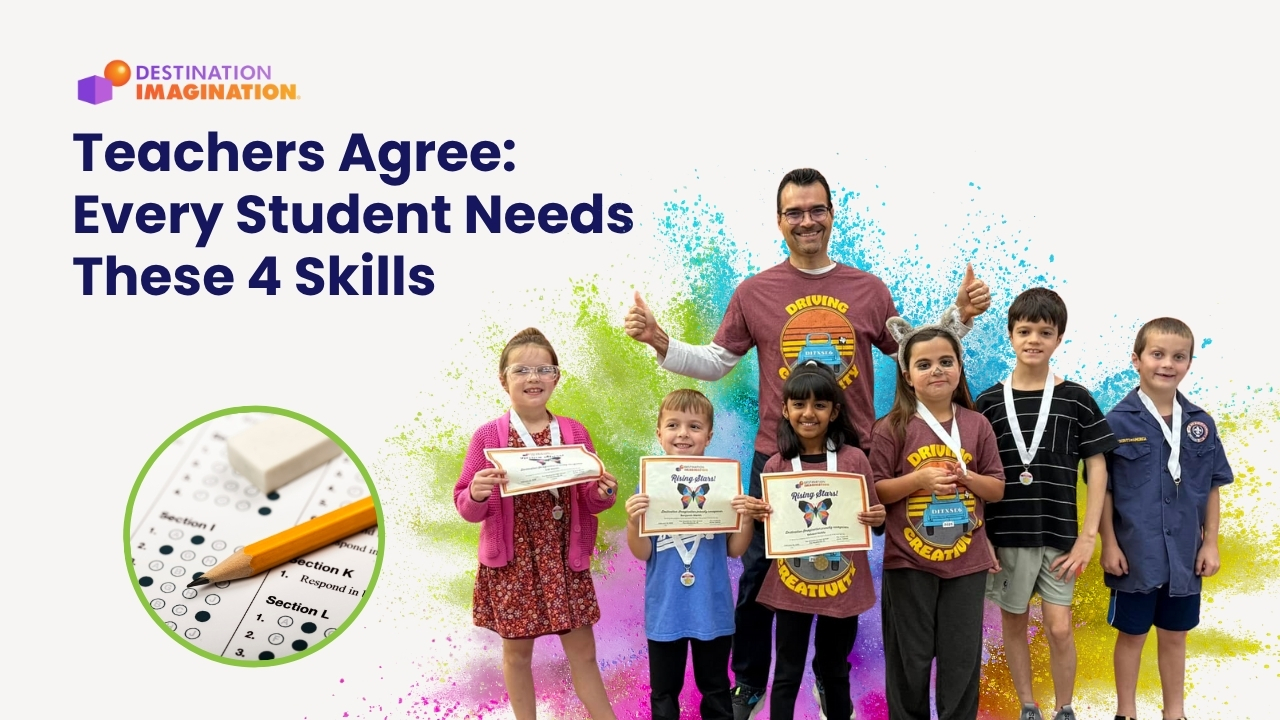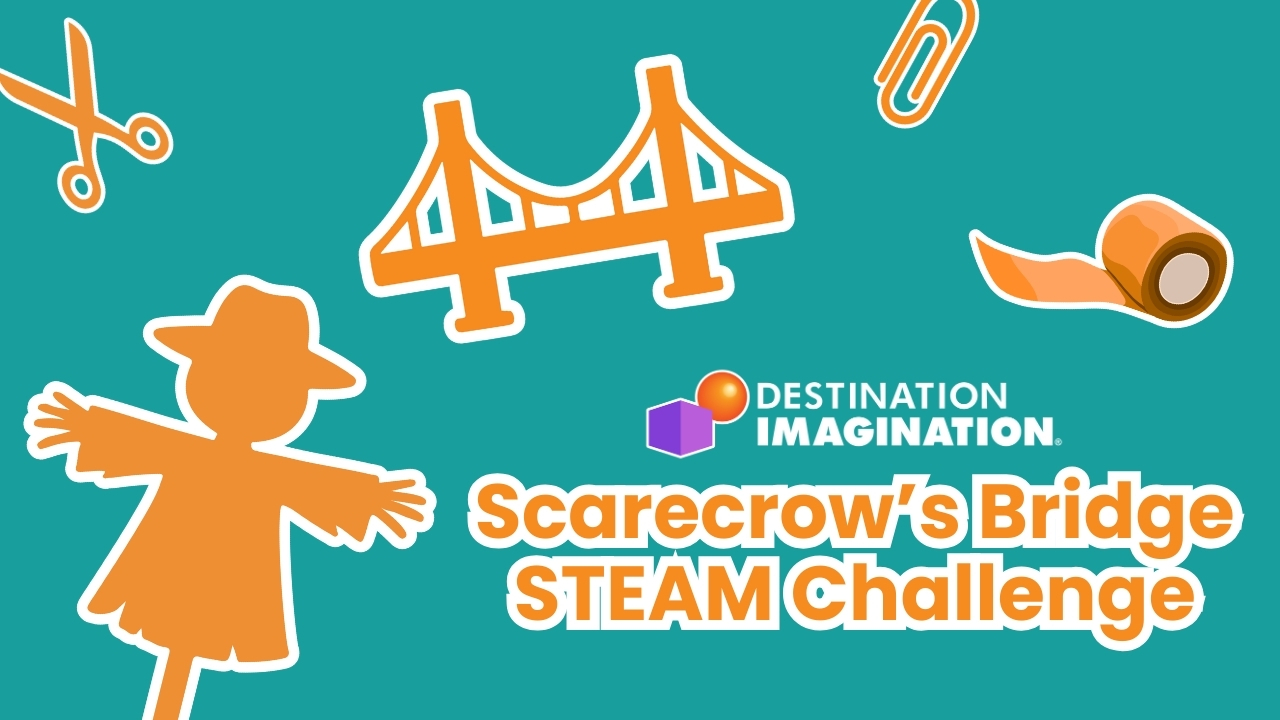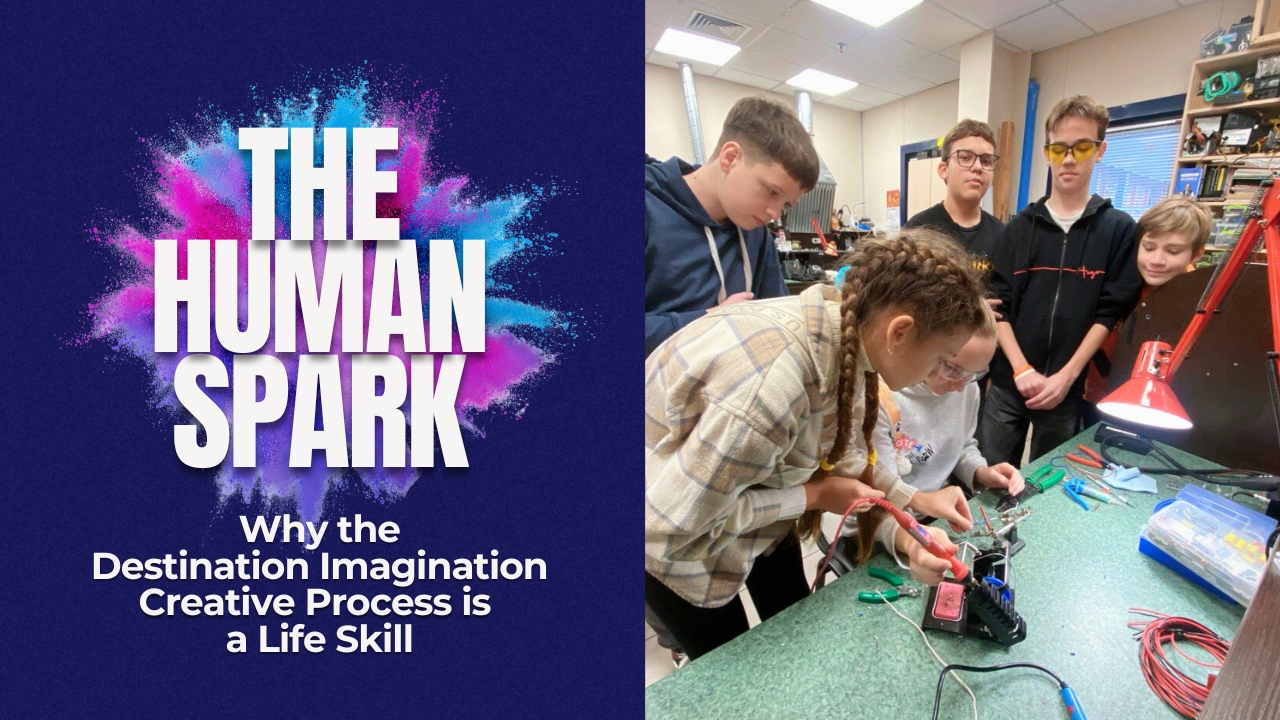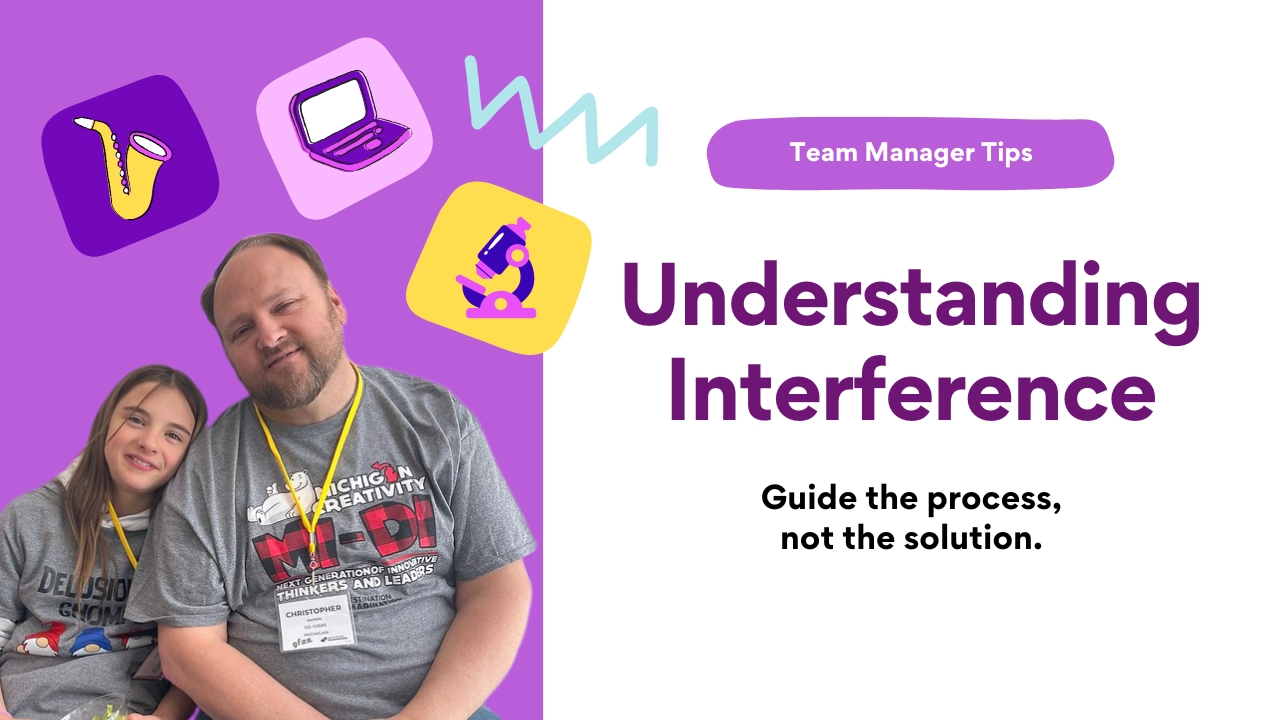Imagine you arrive at work and learn that your co-worker, who is leading a big presentation for your team that morning, is out sick. The meeting is still on, and you’ve been asked to give the update. You have one hour to regroup, gather your teammates, and figure out how to deliver the presentation together.
Who’s going to take the lead? Who knows which parts best? How do you divvy up the talking points and make sure it’s cohesive when no one’s rehearsed it? As the clock ticks down, you start to see who naturally steps up, who stays calm under pressure, who finds creative ways to fill the gaps—and where the team’s strengths and gaps reveal themselves.
That’s an Instant Challenge in disguise.
For students in Destination Imagination (DI), moments like these are more than familiar—they practice them every week. Instant Challenge is a surprise, hands-on task that pushes students to think creatively and work together under pressure. It may look like fun, but it’s also serious skill-building.
Each challenge helps kids develop the same skills adults rely on every day—skills that many of us are still learning to strengthen: creativity, critical thinking, collaboration, and adaptability. And because Instant Challenge makes up 25% of a team’s overall DI score, many teams make it a cornerstone of their season-long practice.
Turning the Tables
Recently, one team in Mexico—the Creative Monsters—decided to shake up their Instant Challenge practice with a creative twist: this time, it was the parents’ turn to take on the challenge.
The activity was called “Number Tower.” Teams were tasked with building a freestanding tower inspired by a number of their choice. Once the structure was complete, they had to give a short presentation explaining how that number influenced their design.
Like all Instant Challenges, it was a short, high-energy activity—this one lasting less than eight minutes from start to finish. Using only a small assortment of everyday materials—six straws, four pencils, four index cards, four chenille sticks, four craft sticks, four mailing labels, two sheets of paper, two clothespins, and one paper cup—teams had to plan quickly, think creatively, and communicate clearly to bring their ideas to life under pressure.
The Creative Monsters decided to approach it in two rounds. First, the students built their towers and completed the presentation without parents watching. Then, the team watched as the parents took on the same challenge.
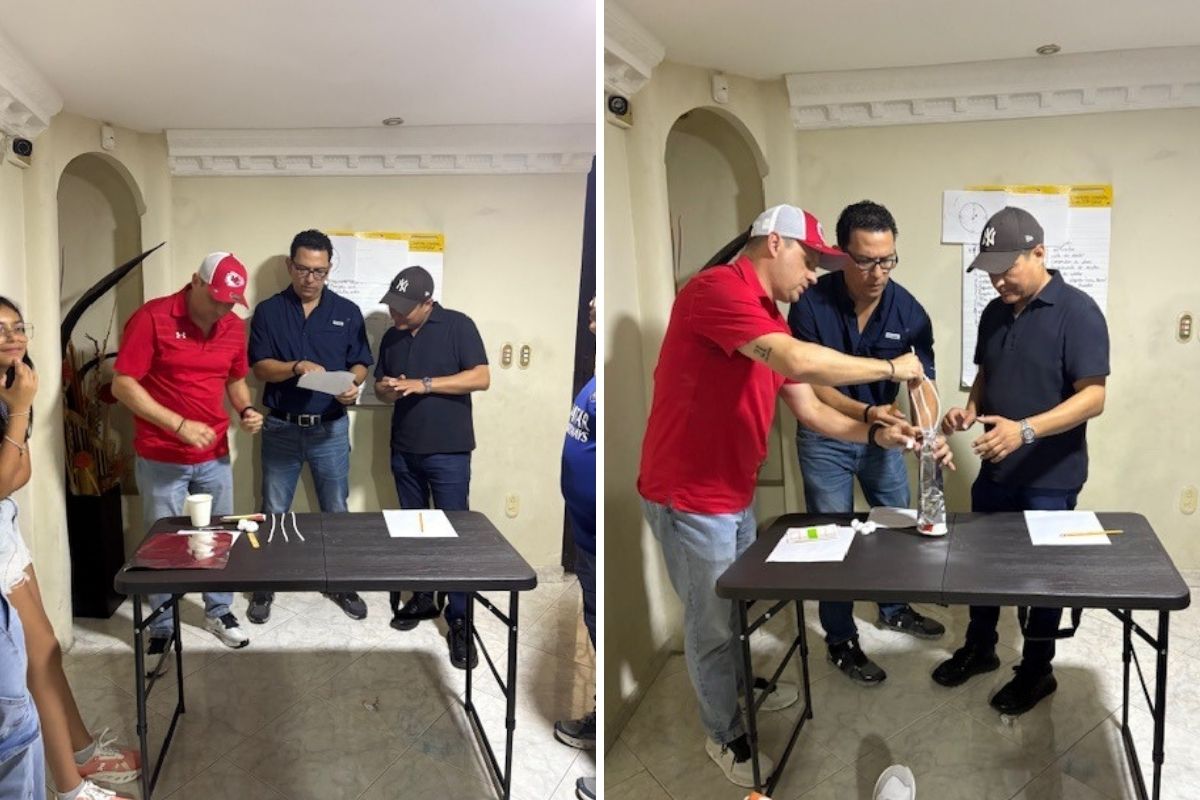
What followed was both fun and eye-opening. The kids got to see entirely new ways of approaching the problem, while the parents experienced the same kind of creative pressure their kids face at every practice and tournament.
A New Perspective
The Creative Monsters’ longtime Team Manager, Laura Edith González, who has led the team for four years, says what stood out most was the shift in perspective.
Laura is an accountant and auditor who runs her own accounting firm, but outside of work, she has a deep love for the arts. She first joined DI when her nephew’s team needed help with acting and performance, drawing on her background in theatre. What started as a favor quickly became a passion. Today, she sees DI as the perfect blend of creativity, collaboration, and real-world learning.
She co-manages the team with Roel Torres, a teacher who works with CreadEduu, a STEAM-focused educational organization in Mexico. Roel first discovered DI when two of his students proudly showed him their project. Now, in his second year as a Team Manager, he continues to be inspired by the creativity and growth he sees in his students each season.
Laura says what moved her most about this activity was watching the kids’ expressions as their parents worked through the same creative process.
“Through this exercise, the kids realized that when a challenge is difficult, it’s not because they ‘failed,’ it’s because the task itself is designed to stretch their creativity,” said Laura. “And seeing their parents struggle a little too showed them that mistakes are part of the process, not the end of it.”
For the parents, the experience revealed something just as valuable. They saw firsthand the teamwork, adaptability, and quick thinking their children practice in DI—and how much skill it takes to collaborate effectively under pressure. Beyond the learning, the activity sparked laughter, bonding, and a deeper appreciation for the creative process itself.
The Power of Modeling Creativity
Children often learn more from what they observe than from what they are told. Watching their parents model resilience, collaboration, and creative thinking gave the kids permission to embrace those same qualities. For parents, stepping into their children’s world revealed just how much growth is happening through the DI experience—how creativity builds confidence, and how teamwork becomes second nature through practice.
More Than a Challenge
In the end, this experiment was about more than Instant Challenge practice. It was a glimpse into how creativity, communication, and adaptability show up in all parts of life—whether you’re a student facing a new task or an adult leading a last-minute presentation.
Real learning happens in those uncertain moments–when we’re willing to take a chance, figure things out together, and see what we can learn along the way. That’s what DI is all about: helping kids build the confidence to lead, collaborate, and problem solve in any situation. And when parents join that process, they see firsthand that creativity isn’t just a skill—it’s a shared experience that can bring people closer together.
💡 What about your team? Could parents, siblings, or even teachers join in on an Instant Challenge for fun? Sometimes the best way to understand DI is to experience the challenge yourself.
